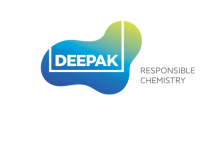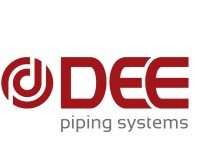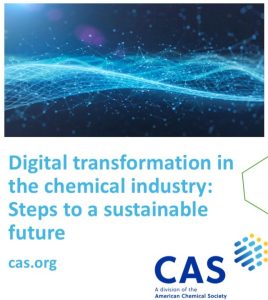Vishal Sharma, Dr. Raja Kaliappan
Abstract
In the modern digital age, both advanced and basic products are integral to daily life, with their development relying heavily on chemical R&D. This article explores how chemical R&D has evolved from focusing on breakthrough innovations, like Nylon, to addressing performance enhancement, new applications, and disruptive ideas. Success in chemical R&D is defined through time to market, return on investment, and value creation.
Introduction
In today’s modern digital world, we are surrounded by advanced digital products such as smartphones and basic products such as a hand wash, both of which are essentials in our daily life. There are many such products we use in our daily life, and these are made from chemical ingredients. These products are an outcome of systematic research and development to meet needs that would make our quality of life better or make our life simple. All these products have some or other form of chemicals or ingredients that were discovered/developed by R&D organization of chemical industries or academia for a specific application. The product or ingredient development begins with an idea and if successful, it meets a customer need and becomes a commercial success.
The success of the product development (R&D) contributes to the growth of the organization. In the last century, one great idea (eg. Nylon) was sufficient to set the given organization on road to success and growth. Executives, who championed these ideas also grew along with the organization. In today’s scenario, the R&D (innovation) approach has changed, and it is increasingly focused on enhancing the functional performance or finding new applications for the existing product or customizing the existing product or developing totally disruptive and breakthrough ideas that may meet known customer needs or often latent customer needs. This article is focused on presenting the factors (tips) that will help to improve the success rate in chemical R&D on an overall basis.
Define Success
Given that chemical R&D deals with a wide variety of chemical ingredients and products and their applications, the obvious question that would arise is: “How do we define success”? While there are multiple performance indicators, the following three would be important.
- Time to market – how long does it take for the development to happen? And will it perform and last long enough to make it a commercial success before it is replaced with something better?
- Return on investment – does it make business sense to invest in this development? If successful will there be a payback?
- Created value – is it creating value for the customer / user with the intended need? Is it different or better?
Improving R&D Success Rate
There are several factors that impact the success rate of R&D in a chemical industry. This section covers the factors, but not limited to,
Strategy
The R&D strategy should be closely connected with corporate strategy. It is important to identify core products, regions, end markets and customers. The R&D investment should be planned based on potential returns and not a peanut butter spread equally across all segments. Focusing R&D efforts in relatively more profitable areas give better results than an equal spread. The strategic planning process should involve leaders from strategy, marketing, sales, manufacturing, supply chain and R&D, to reach the right level of specificity on priority market segments that can guide R&D investment and resource allocation. The strategic planning activity should arrive at both short term and long-term R&D strategies that are connected to the corporate strategy. The strategy should be then extended into actionable operating plans across the levels in R&D. Eventually, all this boils down to defining specific development projects, which then need to be executed over their timeframes and eventually launched commercially, once they are technically and lab successful.
Customer Focus
Chemical companies have an opportunity to improve how they bring the customer’s perspective into the R&D process. While leading innovation-based companies develop a deep understanding of the customer’s strategy and product roadmap, and then tailor their products to meet the customer’s needs, not every organization does this. Some of them could be fascinated by solving cool scientific problems of no customer value rather than solving problems for customer. While challenging problems may be more interesting to work on than delivering features that customers will buy, it will not contribute to the success rate or growth of the organization. Sometimes R&D hasn’t invested enough time understanding customer needs and their product roadmap or is unable to translate that into requirements. Bringing the customer’s voice into the R&D process makes a significant difference in the growth and performance of the organization. Customer focused R&D organizations create more value and are faster to the market. Needless to add that it gives a relatively higher return on investment. Great R&D teams spend between 25-30% of their time in their markets with their customers and sales and marketing teams.
Operating Model
Having the right strategy and customer focus is not sufficient. R&D needs to have the right operating model for governance and decision making. Innovation requires effective interaction among R&D, strategy, marketing, sales, supply chain and other support functions. The operating model helps to organize and manage resources, including organizational structure, decision-making accountabilities, ways of working and governance. Most of the Innovation based organizations follow stage-gate process to manage their innovation pipeline and to monitor KPIs such as time to market, return on investment (vitality index or peak annual sales). In a stage-gate process, the parameters for quality and success are well defined at each stage and a decision is made at each stage based on the business case and technical profile. When followed with the right rigor and discipline, stage-gate process yields good results and therefore good success rates. In summary, it helps to focus efforts on projects where opportunities are available. The key point is on spending scarce R&D time and resources on value creating projects and not getting distracted by other work. The metrics mentioned above help the focus.
Partnering and Co-creating
In the past, partnering or co-creating was not viewed as an opportunity to improve the time to market and create value, rather it was seen at least by some as a threat in managing IP and trade secrets. The scenario has changed positively in the last two decades. Leading chemical companies set up innovation exchanges where customers’ product development teams share their roadmap and their challenges in product development. This helps identify how the properties of chemical products will need to evolve to meet new demands. These exchanges have increased in the recent decade and organizations are now more open in sharing their future requirement and willingness to co-create. In the absence of customer driven innovation exchanges, creating prototypes for the customer to help solve potential challenges in the industry gives an opportunity for getting closer to customers. Sometimes, new products or applications are too often sold to a single customer, but they can frequently be reapplied to work for other customers and new applications. This requires good cross functional integration among R&D, strategic marketing and sales organizations. Needless to mention that there are significant benefits in partnering with academia for development in addition to industrial R&D. Partnering with Government led institutions and CSIR establishments is also often useful.
Data Management and Digitization
It is important to make smart innovations rather than hard innovations. AI, Scientific IoT, robotics etc help to make smart innovations. These tools also help to reduce the time to market and solve complex problems. Organizations should encourage and implement the use of modelling and simulation technologies and incorporate technology to manage R&D workflows. Real time analysis technologies help to make reliable and faster decisions. The IT for managing R&D should be also be up to date and free from cyber-attacks etc.
R&D workflow involves generation of a lot of data. Advanced data analytic tools can reduce the time of human analysis and make predictions more reliable and faster. These tools can also help to convert data into valuable product development insights. The efficiency of research can be improved by having a common research platform, particularly in collaboration models.
Tools like electronic book keeping and records maintenance are very useful in efficiently tracking information and making sure that nothing is lost in the event of personnel changes.
Skills and Capabilities
Having the right combination of skills and talents in R&D is important to drive idea to commercialization. The R&D staff should be a mix of skillsets to address current and future requirement, ably supported by a continuous skills development program. While identifying the right problem is important, it is equally important for it to be addressed by the right skill set to create value and faster time to market. While it is easy for any organization to attract top researchers to improve the success rate, a lack of direction will undermine R&D returns. It is important to avoid a strong team running in too many directions. The key is to remain focused and make the right decisions.
Adopting new ways of working in R&D labs is essential to increasing innovation and enabling faster time to market. Flexible working and collaboration models that engage talent from a broader workforce ecosystem, supported by enabling technologies are necessary. It takes time for an organization to develop a new capability. Collaboration helps to reduce the timeline for capability building and subsequent product development.
In summary, emphasis on people will drive innovation and enable scientists to push the boundaries of scientific research.
India Specific
Given the growth rate and size of our country, a large number of quality R&D workforce is needed to drive the science and technology landscape of the country. India spent 0.64% of its GDP on R&D in 2020–21, while the same amongst other developing BRICS countries was—Brazil (1.3%), Russian Federation (1.1%), China (2.4%), and South Africa (0.6%). This ratio was 0.3% for Mexico. Most of the developed countries spent more than 2% of their Gross Domestic Product (GDP) on R&D. We need substantial investment in the R&D, which has been much lower than the world average.
It is interesting to note that, post-COVID-19, there has been an upswing in innovation in India. During COVID-19, we witnessed a raise in innovation. India developed its own vaccines and became one of the largest producers of vaccines. Development of many MedTech devices like ventilators is encouraging. There is a need to sustain that innovation ecosystem and keep that momentum alive. With more investments in R&D, it is equally important to ensure that we have a good success rate.
Summary
In the fast-paced world of specialty chemicals and formulation development to create products for target specific applications, leading organizations need to leverage every tool available to speed up their journey to market success while reducing risk.
Chemical companies that invest in transforming R&D and improving success rate, reap significant benefits:
- Efficiency: clarity on which R&D projects to shelve and which to boost
- Financial: more effective commercialization across the organization
- Customer focus: focus on the customer creating the right solutions that create value.
Improving R&D success rate requires time, commitment from senior leaders and persistence to see it through to full potential. It’s a journey that every chemical company should be considering, because, if it is done the right way with rigour and discipline, the benefits are humongous.

Vishal Sharma (B.E. PG.Dip. in Mgt.) is the Executive Director and CEO of Godrej Industries Chemicals. He joined Godrej from Ecolab Inc. where his previous role was as Senior Vice President of the India, Middle East and Africa (IMEA) region, based in Dubai since June 2020. Sharma has led start-up businesses during his career and is credited with multiple transformational and scale-up initiatives.

Dr. Raja Kaliappan (MSc Tech in Chemical Technology, Ph.D in Organic Chemistry), is the Head of Research and Development (R&D), Godrej Industries Limited (Chemicals). He is also a member of the Godrej Leadership Forum. He has a career spanning over 18 years. Raja has spearheaded numerous successful projects and initiatives over his career. His passion for research, coupled with his commitment to excellence, aligns perfectly with the company’s values and aspirations.
Republished from July 2024































